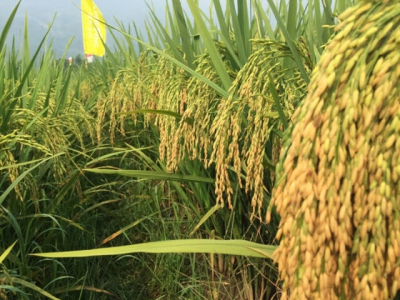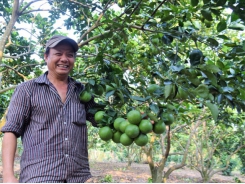Another story about hybrid rice in Vietnam

A summary of hybrid rice’s 30 years of entry and development in Vietnam, what is its position and role in the current time, and perspectives about it in the near future.
Hybrid rice has the advantages of high yield, good resistance to pests and diseases.
It all started in the early 90s of the last century, hybrid rice entered Vietnam mostly by unofficial means as mentioned by newspapers. We temporarily called this the first generation of hybrid rice.
As we know, after the Chengdu conference, which signifies that the relationship between Vietnam and China had been normalized, all exchanges from senior leaders to localities, unions and people became bustling, especially trading with cheap Chinese goods massively landed in the scarce market of Vietnam.
Hybrid rice seeds in the mid to late 90s were as vibrant as consumer goods. That was the period when we imported tens of thousands of tons of hybrid rice seeds from China, through border gates such as Ha Khau (Lao Cai), Pho Chai (Lang Son), Mong Cai (Quang Ninh)... When it was time for the crop, seed enterprises from provinces, to districts, to non-business units as well, imports happened as soon as they got a quota, negotiations with Chinese seed enterprises on price and quantity are discussed right on the border. At that time, people only focused on hybrid rice, only a few thought about pure rice, but later pure rice from China also made a name for itself.
Generations of hybrid rice
The first generation of hybrid rice in large scale and quantity must include Bac Uu 64 (TG4) for the seasonal crop, San Uu 63, San Uu Que 99 (TG1 and TG5), Nhi uu 63 for the spring crop. The ordered combinations were TG2 and TG3, due to low hybrid advantages, they could not be widely used in Vietnam. In the early years, large rice areas were mainly developed in crops throughout the Red River Delta provinces, a few years later, new hybrid dominant rice expanded more in other regions (Northern Midlands and Mountainous Areas, North Central Coast and Southern Vietnam).
In the mid and late 90s, a new generation of hybrid rice had been tested and spreaded until now, including Nhi Uu 838, D.Uu 527, Phu Uu No. 1, Khai Phong, Cuong Uu multi-generational..., For the crops, there were Uu 903, Uncle Uu 968... Many new varieties were sometimes combinations of the same mother different father or vice versa from the previous generations. At this period, after spreading for about 4-5 crops, the quality of Bac Uu 64 began to fluctuate. Batches of imported seeds with low germination rate appeared, then came the low purity due to impure mix, the poor quality mother line leading to reduced hybrid advantage and the yield not as outstanding as the original batches. Around the end of this decade, the hybrid rice crop decreased rapidly. The new generation of hybrids Bac Uu 903 and Bac Uu 968 are more resistant to blight, but they failed to attract farmers.
In the early 2000s, the technical staff had well grasped the hybrid rice production technology, and the improvement began. The A and R lines have been bred by institutes and companies, making us more proactive in producing hybrid seeds, instead of having to import parent seeds.
Crops and cultivation regions shift
The commercial hybrid rice acreage has begun to shift from sowing in the main crop to sowing wider in the spring crop. During the summer-autumn crop, hybrid rice is still planted but the acreage has decreased rapidly and only varieties with high resilience to blight get expanded.
The hybrid rice shift in regions is also quite clear. In the Red River Delta, the proportion of hybrid rice area decreased from a few tens percent in the structure, even some crops with over 50% (Nam Dinh, Thai Binh, Hai Phong) reduced to less than 10-15%. The hybrid rice cultivation area had been expanded to the Northern mountainous region and especially in the North Central region. Thanh Hoa and Nghe An are the two localities with the highest hybrid rice area in recent years. In the Cuu Long Delta, hybrid rice has been expanded in the rice-shrimp area of the Ca Mau peninsula.
Có thể bạn quan tâm
Phần mềm

Phối trộn thức ăn chăn nuôi

Pha dung dịch thủy canh

Định mức cho tôm ăn

Phối trộn phân bón NPK

Xác định tỷ lệ tôm sống

Chuyển đổi đơn vị phân bón

Xác định công suất sục khí

Chuyển đổi đơn vị tôm

Tính diện tích nhà kính

Tính thể tích ao hồ



 High potential of fruit and vegetable exports in…
High potential of fruit and vegetable exports in…  Quang Nam province raises export value from agricultural…
Quang Nam province raises export value from agricultural…